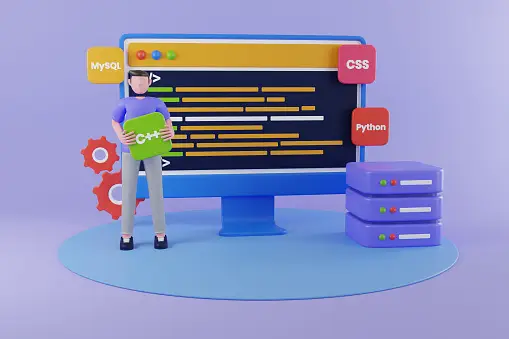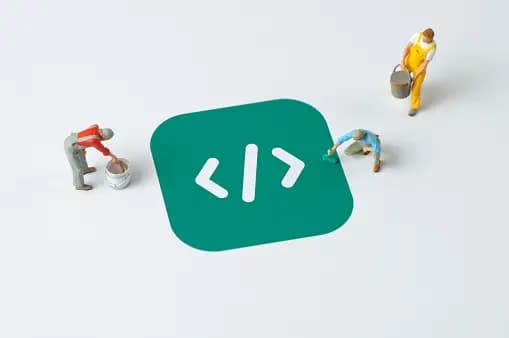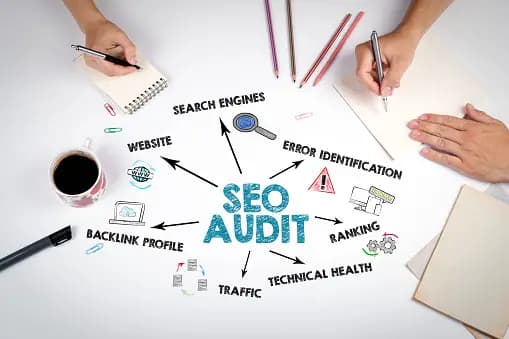
Choosing the Right Tech Stack for Your Web Application
Mastering the Art of Choosing the Right Tech Stack for Your Web Application
In the ever-evolving landscape of web development, selecting the right tech stack for your web application is akin to laying the foundation of a skyscraper. It requires meticulous planning, careful consideration of various factors, and a deep understanding of the available technologies. With an abundance of options ranging from backend frameworks to database management systems, making the right choice can be daunting. However, armed with the right knowledge and strategic approach, you can navigate through the maze of options to build a robust and scalable web application that meets both your current and future needs.
Steps of choosing Tech Stack | Principles of choosing Tech Stack |
|---|---|
Define Project Requirements and Objectives | Scalability |
Access Team Skills and Expertise | Performance |
Research Market Trends and Best Practices | Security |
Consider Scalability and Performance Requirements | Flexibility |
Evaluate Security and Compliance Needs | Compatibility |
Budget and Resource Constraints | Simplicity |
Choose Frontend Technologies | Reliability |
Select Backend Technologies | Community |
Evaluate Third-Party Integrations | Efficiency |
Plan for Future Growth and Maintenance | Maintainability |
Understanding the Basics:
A. What is a Tech Stack?
Explanation: A tech stack refers to the combination of software tools, programming languages, frameworks, and infrastructure used to develop and operate a web application. It encompasses both frontend and backend components, along with other essential elements like databases, servers, and development environments.
B. Why is Tech Stack Selection Important?
Explanation: The selection of a tech stack significantly impacts the performance, scalability, security, and success of a web application. Choosing the right tech stack ensures efficient development, seamless integration, and future-proofing against evolving technology trends.
C. Key Components of a Tech Stack
Explanation: A typical tech stack includes backend frameworks for server-side logic, frontend frameworks for client-side interactions, database management systems for data storage, and various tools for development, deployment, and monitoring.

II. Evaluating Your Requirements:
A. Identifying Project Goals and Objectives
Explanation: Clearly define the objectives, target audience, features, and expected outcomes of the project to determine the most suitable tech stack. Consider scalability, performance, security, and budget constraints during the evaluation process.
B. Assessing Technical Requirements
Explanation: Evaluate technical aspects such as data handling needs, real-time processing requirements, third-party integrations, and compliance standards to identify the necessary components and functionalities of the tech stack.
C. Considering Budget and Time Constraints
Explanation: Budget and time constraints are crucial factors in tech stack selection. Assess the cost of licensing, hosting, and maintenance for proprietary technologies versus open-source solutions. Consider the time required for development, testing, and deployment to ensure timely delivery.
III. Key Considerations in Tech Stack Selection:
A. Backend Frameworks:

1. Exploring Options: Node.js, Django, Ruby on Rails
Explanation: Different backend frameworks offer unique features and performance characteristics. Node.js excels in handling real-time applications, Django provides scalability for Python developers, while Ruby on Rails emphasizes rapid development.
2. Scalability and Performance Optimization
Explanation: Consider scalability features and performance optimization techniques offered by each backend framework. Factors like concurrency handling, caching mechanisms, and asynchronous processing impact scalability and performance.
3. Security Features and Authentication Mechanisms
Explanation: Security is paramount in web applications. Choose a backend framework that offers robust security features like encryption, authentication, authorization, and protection against common vulnerabilities.

B. Frontend Frameworks:

1. Overview of Popular Choices: React, Angular, Vue.js
Explanation: React, Angular, and Vue.js are widely adopted for their component-based architecture, efficient rendering, and rich ecosystem of libraries. Choose based on project requirements and developer expertise.
2. Cross-platform compatibility and Mobile-Friendly Development
Explanation: Ensure the chosen frontend framework supports cross-platform compatibility and facilitates mobile-friendly development through responsive design principles and progressive web app features.
3. UI/UX Design Considerations and Responsive Design Techniques
Explanation: Prioritize frameworks that facilitate seamless integration with UI/UX design tools and support for reusable components and responsive layouts for diverse devices.

C. Database Management Systems:

1. Relational Databases vs. NoSQL Databases
Explanation: Choose between relational databases for structured data and SQL querying or NoSQL databases for unstructured or semi-structured data and horizontal scalability.
2. ORM Frameworks and Data Modeling
Explanation: Use ORM frameworks to simplify database interactions and data modeling. Choose based on compatibility with backend frameworks and features like schema migrations and query optimization.
3. Data Backup Solutions and Disaster Recovery Planning
Explanation: Implement robust data backup solutions and disaster recovery plans to safeguard against data loss or corruption. Utilize database replication and cloud storage services for data availability and integrity.
D. DevOps Practices:

1. Continuous Integration/Continuous Deployment (CI/CD)
Explanation: Automate build, testing, and deployment processes with CI/CD pipelines to ensure rapid and reliable delivery of code changes to production environments.
2. Containerization with Docker and Virtualization Technologies
Explanation: Use containerization technologies like Docker and virtualization technologies for lightweight and portable deployment across different environments.
3. Version Control Systems and Collaboration Tools
Explanation: Utilize version control systems like Git and collaboration tools for code management, tracking changes, and facilitating collaboration among team members.
IV. Tech Stack Evaluation Criteria:
A. Performance Benchmarks and Load Balancing Strategies
Explanation: Measure the performance of tech stack components and implement load-balancing strategies for optimal performance and reliability.
B. Security Features and Compliance Requirements
Explanation: Evaluate security features and ensure compliance with industry standards to protect sensitive data and mitigate security risks.
C. SEO-Friendly Architecture and Page Speed Optimization Techniques
Explanation: Design tech stack with SEO-friendly architecture and implement page speed optimization techniques to improve search engine visibility and user experience.

D. Accessibility Standards and Internationalization Support
Explanation: Ensure compliance with accessibility standards and provide internationalization support for a broader user base.
V. Making Informed Decisions:
A. Tech Stack Comparison: Pros and Cons
Explanation: Compare strengths, weaknesses, and suitability of different tech stack options based on project requirements and long-term maintenance considerations.
B. Cost-Effective Technologies vs. Proprietary Solutions
Explanation: Evaluate the total cost of ownership for each tech stack component and balance the benefits of proprietary solutions with the flexibility and cost-effectiveness of open-source alternatives.
C. Considering Integration Capabilities and Customization Options
Explanation: Assess integration capabilities and customization options to ensure seamless communication and adaptability of tech stack components.
D. Community Support and Documentation Availability
Explanation: Consider community support and availability of documentation for tech stack components to facilitate troubleshooting and knowledge sharing.

VI. Future-Proofing Your Tech Stack:

A. Keeping Abreast of Technology Trends
Explanation: Stay updated on technology trends to adapt tech stack components and practices for future requirements.
B. Embracing Open-Source Solutions and Framework Flexibility
Explanation: Embrace open-source solutions and frameworks for flexibility, innovation, and community support.
C. Planning for Scalability and Future Expansion
Explanation: Plan tech stack architecture and infrastructure for scalability and accommodate future growth and expansion.
D. Adopting Agile Software Development Practices for Rapid Prototyping
Explanation: Adopt agile practices for iterative development, rapid prototyping, and continuous improvement of the tech stack.
Conclusion:
Choosing the right tech stack for your web application is not a one-size-fits-all approach. It requires careful consideration of your project requirements, technical expertise, budget constraints, and future scalability needs. By following a structured approach, evaluating various options, and staying abreast of technology trends, you can build a robust and scalable web application that stands the test of time. Remember, the key to success lies in making informed decisions and adapting to the ever-changing landscape of web development.
VII. FAQs:
Q1. How do I determine the best backend framework for my project?
A . To determine the best backend framework, consider your team's expertise, scalability needs, security features, and community support for long-term maintenance.
Q2.What are the advantages of using containerization technologies like Docker?
A . Containerization technologies like Docker offer benefits such as consistency across environments, resource efficiency, simplified deployment, and streamlined management of application components.
Q3.How can I ensure the security of my web application?
A . Ensuring web application security involves implementing robust authentication, encryption, regular security updates, security testing, and promoting security awareness among developers and users.
Q4.What role does UI/UX design play in tech stack selection?
A . UI/UX design influences frontend technology choices, impacting user experience, responsiveness, accessibility, and overall satisfaction, making it crucial in tech stack selection.